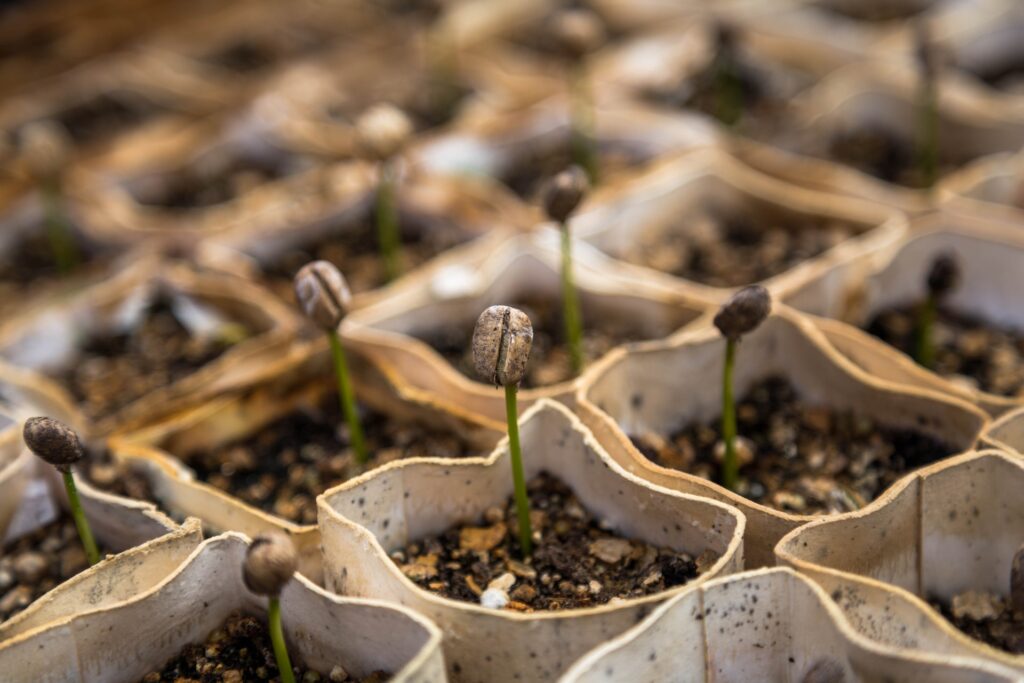Four Uses for Your Coffee Beans
Early in the morning, there are few things that get the job done, like a hot cup of coffee. Many coffee enthusiasts even collect a variety of unique beans to change their brew day to day or to best complement the particular brewing method they are using. Some enthusiasts, however, like to find different uses for their coffee beans. From unique brewing techniques to lifestyle uses, what will you do with your extra coffee beans?

Cold Brewing
An iced coffee alternative that has taken third-wave coffee by storm, cold brew is an excellent alternative brewing process to use your coffee beans with. Cold brewing grants a stronger cup with a smoother, chocolatier flavor than other brewing methods, and you can make it with the same beans you use for your morning cup of joe!
First, it’s important to understand the difference between brewing iced coffee and cold brew and what to do with your coffee beans when you brew these methods. Iced coffee is a more traditional cold coffee brewing method, where the coffee is first brewed hot and then flash-chilled by pouring the coffee over ice. Grounds are also ground finer than a typical filter brew, which results in an acidic, bright, and somewhat diluted cup that more closely mimics a hot brewed coffee. Iced coffee also takes very little time, often less than 5 minutes for a delicious and cold cup of coffee.
On the other hand, cold brew is maintained at a cold or room temperature throughout its entire brewing process. Using coarsely ground coffee, similar to that of a French press, grounds are kept submerged in water for at least 12 hours, up to 20 hours; this develops a rich, chocolatey, and low-acidity coffee concentrate that can be mixed 1:1 with water for a delectable and smooth iced coffee beverage. Flavoring with syrups or topping with a cold foam will truly make this drink stand out.
To use coffee beans and cold brew at home, you only need a French press or a container and cheesecloth. Add 1 c. of coffee for every 4 c. of water, mix, and let sit for 12-20 hours. The longer you let the coffee brew, the more caffeinated and bold it will taste — Let it go over 20 hours, however, and you run the risk of oxidation and stale flavors. After the brewing time is up, filter the coffee through the French press screen or a cheesecloth, and store it in the fridge for whenever you want to drink it! Mix it with equal parts water for a plain cold brew beverage, or add milk and syrup for a home version of an iced latte. What you do with your leftover coffee bean grounds depends on you — they can be wasted, composted, or donated to a local garden!

Baking
Baking is another excellent use for coffee beans, and there are many ways to do so!
For the home baker, using brewed coffee instead of milk or water can bring amazing depth and nuance to chocolate desserts, making the chocolate taste richer, fruitier, and bolder overall. Whether you are working with a boxed mix or from scratch, adding brewed coffee to baked desserts is a great way to change things up when you don’t know what to do with your extra coffee bean grounds.
For a more involved and decadent dessert, consider using coffee beans for tiramisu, a classic Italian dessert that always impresses dinner guests. Using a stovetop espresso maker (sometimes called a Moka Pot), you can brew a concentrated and strong coffee that gives a strong kick of flavor to tiramisu, or any other coffee-based dessert!
Coffee Liqueur
There are many more uses for coffee beans than special brewing methods. For mixologists who aren’t sure what to do with the coffee beans garnishes in their bar, consider turning your coffee beans into a coffee liqueur. By mixing sugar, coffee, and dark rum, you can easily make a home-made coffee liqueur that is sure to upgrade espresso martinis and white Russians. You can even make the liqueur more special by adding spices and florals to add depth to the coffee profile, making for a nuanced and truly unique liqueur.
To make use of coffee beans for a coffee liqueur, mix 3 cups of sugar and 3 cups of fresh, hot coffee, making a coffee syrup. Add that to a 750 ml. Bottle of dark rum or vodka, and you’ve made a simple but tasty coffee liqueur that is sure to be a well-used ingredient in your home bar.
Compost
For those with a green thumb, there is a use for coffee beans and grounds that can help minimize food waste and help you grow other plants and crops as well! Adding used coffee grounds or leftover coffee beans to your compost bin is a great way to add a filler material and supplies the compost with essential nitrates and minerals that will fuel plant growth in many soils. Coffee grounds also make for a strong medium to sprout seeds or grow mycelium, giving growers various options to grow beans, tomatoes, mushrooms, or any other produce. On top of that, coffee is an odor neutralizer, which will maintain the smell and odor of your compost bin, preventing smells from spreading out of the compost bin. All in all, composting coffee grounds is one of the lowest waste practices you can do with your coffee, as it makes use of a product that would typically go to landfill.

Get the Most Use out of Your Coffee Beans
As a product that traditionally cannot be reused, it’s a good idea to find out what is possible in your area to get the most uses for your coffee beans. Some localities offer composting services as part of their waste pickup, while others may have local gardens or crop growers who would greatly appreciate the compostable product. Whether you’re trying a new brewing technique or adding coffee beans to your other practices, what you do with your coffee beans is entirely up to you and can support whatever kind of lifestyle you pursue.
